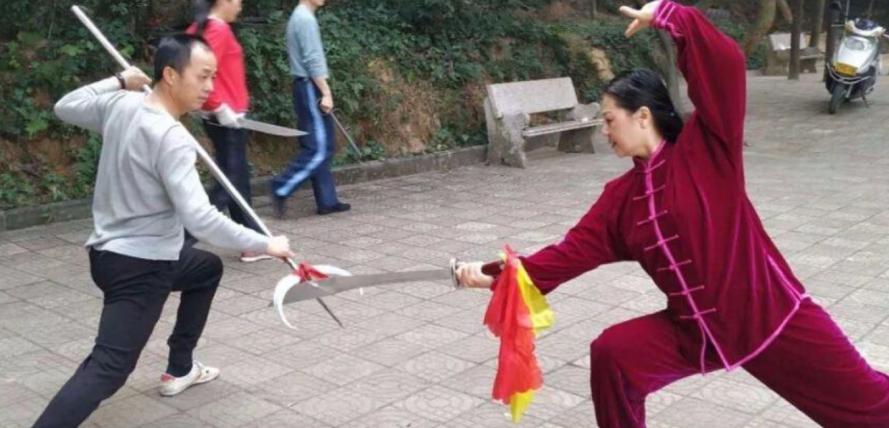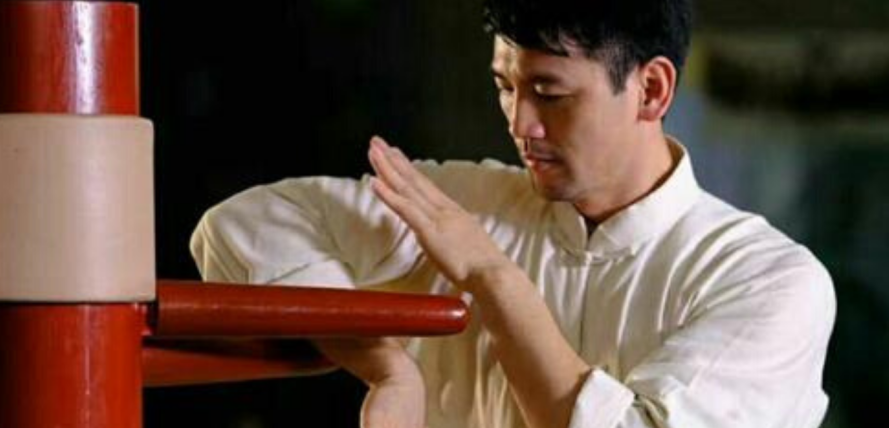“Cai Jia Quan” 蔡家拳, also known under its cantonese name “Choy Gar Kuen” (Cai family boxing), is one of the 5 major southern Wushu styles with Hung Gar, Mok Gar, Li Gar, and Fut Gar, and of course, part of the roots of the Choy Lee Fut Style.
Like most Wushu traditional styles, especially the southern ones, “Cai Jia Quan”, by spreading to many cities, regions and even countries, has different interpretation and therefore, might look different from a place to another. For example, the Guangdong and Hong Kong Choy Gar is quite different, from its Taiwanese / Fujian version, that is directly linked to the Fujian Shaolin Temple (where Cai Jia Quan was originally called “Hu Ying Quan” 虎鹰拳 or “Tiger and Eagle Fist”), and takes its roots particularly in Taizu Quan, which whole system serves as basics to then learn Cai Jia Quan.
Hong Kong Cai Jia Quan:
Fujian / Taiwan Cai Jia Quan:
Origins
According to the legend, the Cai Boxing was created by a Shaolin monk called Cai Jiuyi (also called Cai Zhanguang) during the Qianlong period. The style has spread in a very wide area, including, but not limited to Zhanjiang, Lianjiang, Maoming, Huazhou, Wuchuan, Zhongshan, Jiangmen and other places.
In the beginning, the style was called Cai Jia Long Xing Quan 蔡家龙形拳 (which could be translated as “Dragon shaped Cai Family Boxing”), and spread up to Zhongshan in Guangdong province around the end of the Qing dynasty.
Back then, the Shaolin disciple and anti-Qing rebel surnamed “Lan Tou He” “烂头何” took refuge in Xiangshan and started to teach the style to several apprentices, including Liu Ji 刘纪.
Liu Ji himself had two disciples : Liu Jiuru 刘九如,and He En 何恩, who was obsessed with Wushu and combat efficiency, bringing him his teachers careful attention. He En would never stop looking for new teachers to improve.
During the same period of time, a Shaolin monk called Luo Huan 罗桓 visited Xiangshan and saw in He En a future Wushu master. He therefore decided to teach him. Afterwards, He En continued to modify and perfect the style under the guidance of Luo Huan during 3 years, until it became the Cai Jia Quan we know today. During these 3 years, He En created the forms “Niu Sui Mei” 扭碎梅, “Da Yun Tian” 大运天, and “Xiao Yun Tian” 小运天, that became widely practiced in the Xiangshan area.

He En has been teaching Cai style in many places, including the Lan family ancestral home, Dong Xiang Tou, Nanlang Longxue, and other parts of Xiangshan, and taught in Xijiao township as well for more than 20 years. After his death, his son He Wei 何维 took over and helped spread the style all over Zhongshan but also in Hong Kong and Macao where it became quite popular.
Characteristics
Cai Jia Quan main characteristics could be summarized as follow :
- Fast
- Dexterous
- Changeable
- Aims at dissipating and borrowing strength from the opponent
- Taking advantage of the situation
- Fighting smart
Choy Gar combines hard and heavy attacks with fast paced steps. A saying in Cai Jia Quan goes:
“洪家讲桥马,蔡家讲快打”
“The Hong fist (Hong Jia Quan / Hung Gar Kuen) talks about bridges and horses (铜桥铁马), the Cai fist talks about fast fights”.
During practice against Hung Gar opponents, that have powerful and strong “bridges”, the Cai Jia Quan would move quickly sideways to avoid facing the bridge and enter the center line from the side, blocking the opponent arm with one hand and then hit quickly on weak spots such as the larynx with the edge of the palm , and / or kicking with the knee or the leg in the abdomen for example.

Basics and Techniques :
Cai boxing emphasizes on “clean” and fast techniques. The most common stances are:
- Sìpíng mǎ 四平马
- Tuō bù 拖步
- Gōng bù弓马
- Guì bù 跪马
- Cha bu 插步
- Sānjiǎo mǎ 三角马
The hands include techniques such as:
- Guà quán 挂拳
- Chā quán 插拳
- Shào quán 哨拳
- Sǎo zhǎng 扫掌
- Chā zhǎng 插掌
- Dǐng zhǎng 顶掌
- Chā zhǐ 插指
- Fèng yǎn quán 凤眼拳
As well as elbows techniques, like:
- Héng kǔn zhǒu 横捆肘
- Zhí dǐng zhǒu 直顶肘
- Liánhuán zhǒu 连环肘
Cai Jia Quan also includes leg techniques. For example:
- Biāo tuǐ 标腿
- Cǎi tuǐ 踩腿
- Dīng tuǐ 钉腿
- Gōu dàn jiǎo 勾弹脚
- Bō jiǎo 拨脚
Choy Gar has several empty hands routines:
- Shízì quán 十字拳
- Jǔ zhēng shǒu 举㬹手
- Liù lián quán 六连拳
- Liǔ suì méi 柳碎梅
- Bǎi niǎo guī cháo 百鸟归巢

As well as weapons routines:
- Dān tóu gùn 单头棍 (single head staff)
- Shuāng tóu gùn 双头棍 (double head staff)
- Cài jiā sānshǐ dà bǎ 蔡家三矢大钯 (a pitchfork variation)
- Shuāng dāo 双刀 (double broadswords)
- Guān dāo 关刀 (Halberd)
Reinforcement Training

Traditionally new students would first begin by doing reinforcement exercises such as Zhuang Gong, fingers and body reinforcement including with the usage of a wooden dummy.
Zhuang Gong 桩工 here relates to the fact of holding the Mabu stance and doing Mabu to Gongbu transitions. As the saying goes : “If one hasn’t learn Wushu, he must first learn Mabu” (“未学功夫,先学扎马”). After around 3 months time, then the student would only start learning the basics.
Fingers Reinforcement: Cai Jia Quan attaches a great importance to Zhi Gong 指工 ( Fingers Training). No matter if you are hitting with the palm or the fingers, you need to be able to get a certain amount of power to hit without hurting your fingers.
Usually the aim of finger attacks are the throat, the armpits, and the flank. To strengthen the fingers, the student start by hitting a sandbag lightly then increases power until he can endure the pain. Afterwards, the sandbag is replaced by harder materials like rice bags. The tiger claw practice is also very important and is trained by grasping plastic and iron rings.
In the Fujian / Taiwanese Cai Jia Quan, students also powerfully dive their fingers in a square wooden box filled with black beans. They also use small fishnets filled with rocks that they throw in the air then trust their fingers in the net before grasping the full net with rocks.
Obvious results can be seen after 3 years of practice.
Wooden dummy 木人桩: The Choy Gar wooden dummy is visually similar to a classic wooden dummy but can rotate on its base. Students use the it to improve their hand’s strength and adhesion to the opponent, and to practice side attacks.
